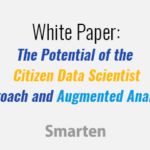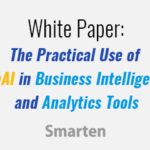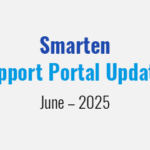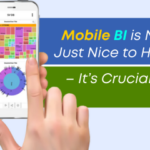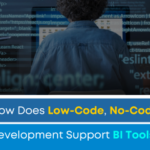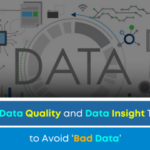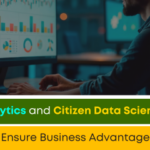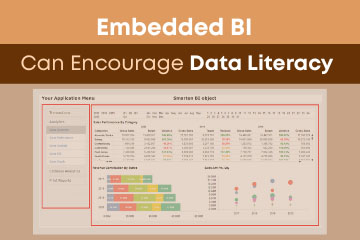
Technology research and consulting firm, Gartner, predicts that, ‘By 2023, data literacy will become an explicit and necessary driver of business value, demonstrated by its formal inclusion in over 80% of data and analytics strategies and change management programs.’
One of the best ways to encourage and improve data literacy is to implement a digital transformation strategy that encourages business users to leverage data from across the enterprise to analyze results, understand the impact of activities and anticipate trends and to present recommendations and results using metrics and information based on fact-based analysis.
‘When faced with the challenge of improving data literacy and enabling digital transformation, the business would do well to consider the Embedded BI with integration APIs approach.’
But how does an organization encourage the use of data analytics and help business users to become more comfortable with the use of data? Every team member is overloaded with tasks and responsibilities and every team member is likely to use software to accomplish these tasks. These software solutions are familiar and often times are a crucial part of workflow, helping the user to capture and monitor data and to check approvals, orders, project status etc.
So, if your team is already used to enterprise, best-of-breed or legacy systems, why not add integrated analytics via embedded business intelligence? Through the use of APIs, these BI tools can be embedded in the enterprise application and accessible via a single sign-on through the user’s favorite software application. So, the user does not have to learn a new software product or visit a separate app to get the job done. They can work within the confines of a familiar software solution to gather and analyze data and produce clear results.
You can enable r business intelligence data democratization and alleviate user frustration with solutions and access to improve user adoption of business intelligence tools, and ensure collaboration, data sharing and fact-based decisions.
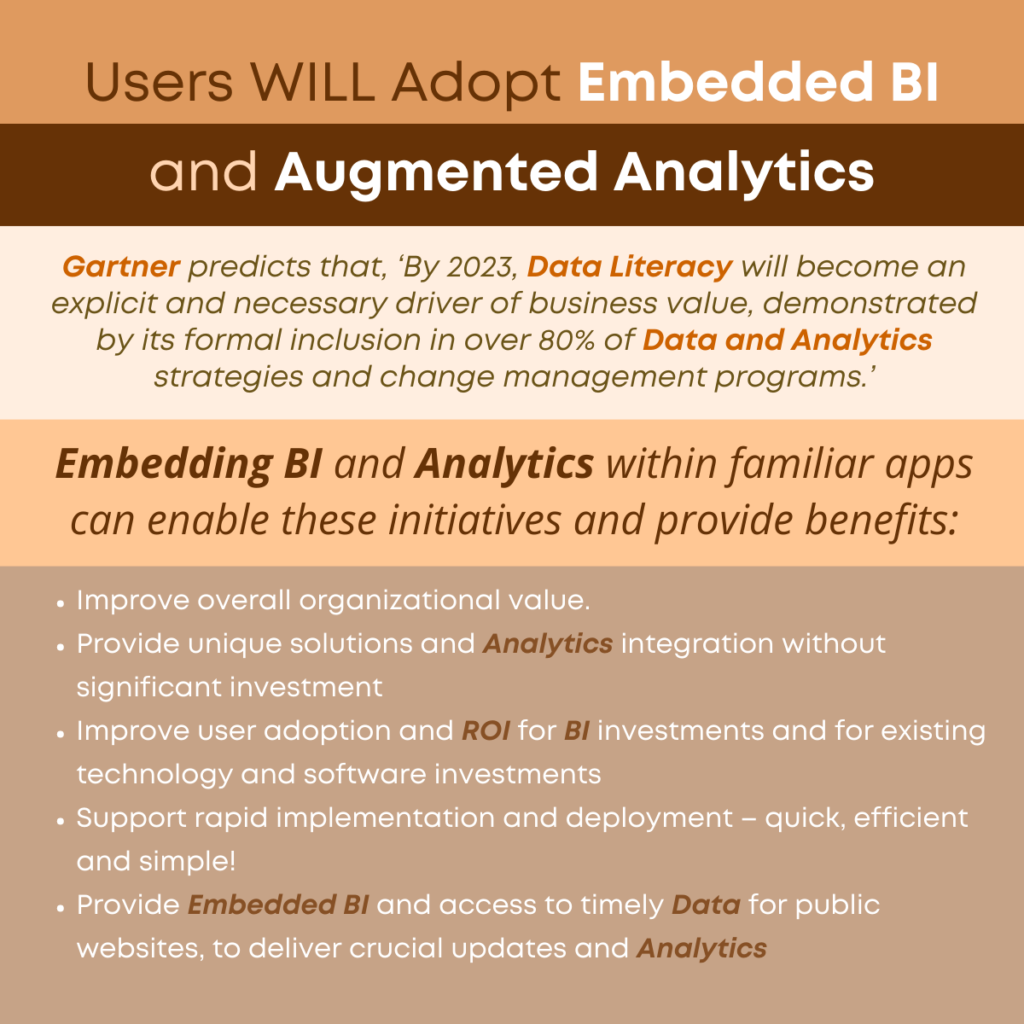
Embedded BI and Augmented Analytics includes traditional BI components like dashboards, KPIs, Reports with interactive drill-down, drill through, slice and dice and self-serve analytics capabilities. It is also supported by advanced analytics components including natural language processing (NLP) search analytics, and assisted predictive modeling to enable the Citizen Data Scientist culture.
Benefits of Embedded BI
The benefits of Embedded BI and Augmented Analytics are numerous. Here are a few for your to consider:
- Improve overall organizational value.
- Provide unique solutions and analytics integration without significant investment
- Improve user adoption and ROI for BI investments and for existing technology and software investments
- Support rapid implementation and deployment – quick, efficient and simple!
- Provide embedded BI and access to timely data for public websites, to deliver crucial updates and analytics
‘How does an organization encourage the use of data analytics and help business users to become more comfortable with the use of data?’
When faced with the challenge of improving data literacy and enabling digital transformation, the business would do well to consider the Embedded BI with integration APIs approach, as it will ease the transition for business users and encourage them to adopt tools that will help them on a day-to-day basis.
Find out more about Augmented Analytics and the benefits of Embedded BI. We can help your business succeed and improve user adoption and data literacy.



